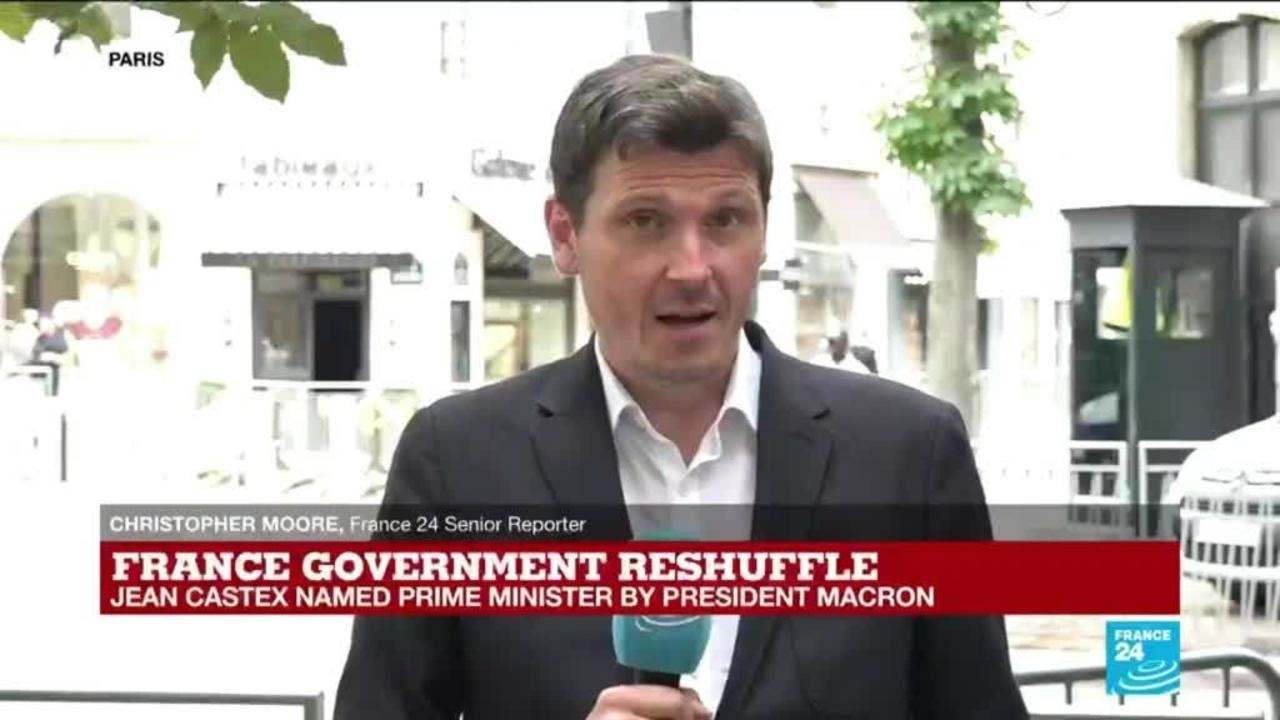It's Thanksgiving week in the US, and most of our staff is enjoying one last work-free afternoon where a trip to the movies or arcade is possible. As such, we're resurfacing this story of visiting the largest arcade in the US (you know, in case you need a small road trip this weekend). This story originally ran on May 17, 2014, and it appears unchanged below.“The largest video arcade in the USA,” boasted the website. “We’ve got to make it over there," I told Deputy Editor Nate Anderson over IM one morning. Galloping Ghost, an arcade located in the western suburbs of Chicago, was said to house well over 400 vintage games. The combination of proximity and the desire to while away an afternoon in a warm, nostalgic gaming haze eventually overpowered our excuses not to go, so we made the trip.
As someone who came of age in the 1980s, games such as Ms. Pac-Man, Donkey Kong, Defender, and Crazy Climber have a special place in my heart. Too many Saturdays, I would hop on my bike, ride to the Aurora Mall, and exchange my paper route earnings for tokens at the arcade there. I spent many an afternoon blasting aliens, gobbling glowing dots, leaping over barrels, and dodging bird poop and potted plants while climbing skyscrapers. As the console games of the time felt like graphically inferior knockoffs of my arcade favorites, my video-gaming attention was focused first and foremost on the arcades.
The mid- and late-'80s saw a decline in arcades, and despite some intermittent surges in popularity, they've never recaptured the glory years that I remember from high school. Gaming these days mostly happens on a console at home, on a smartphone or tablet, or at food-and-gaming behemoths like Dave & Busters. Though shrunken in numbers, arcades like those of my youth still live on in scattered locations.
Galloping Ghost, located in Brookfield, Illinois, about a 25-minute (best case) drive from downtown Chicago, is one such place. $15 gets you all of the gaming you can stand until closing time at 2am—no quarters needed. And hold onto your receipt, as it will get you back in should you choose to head across the street to Tony's Breakfast Cafe (now open 24 hours) for some nourishment.
Galloping Ghost resides in an unassuming brick building on a commercial section of busy Ogden Avenue not far from the Brookfield Zoo. Upon entering, my senses were assaulted by the beeping and blooping of hundreds of cabinets. I noticed the large fans circulating air heated by a couple hundred vintage consoles. "What's the heating bill like in the winter?" I later asked owner “Doc” Mack. "Cheap," he replied.
The wall behind the front counter is populated by pixel-art characters from popular video games. A small fridge offers up carbonated beverages and sports drinks. Under the counter are candy bars. And as I scanned the dimly lit interior, I saw little more than wall-to-wall consoles resting on well-worn gray carpeting. Stools and chairs are scattered around the aisles in case you want to take a load off while getting your game on. Many of the consoles have placards perched on top with record high scores, both worldwide and for Galloping Ghost.
Walking up and down the aisles, I examined the consoles. Some of them looked the worse for wear, with chipping or fading paint and burned-in monitors. Others resided in generic-looking cabinets, or their appearance didn’t square with my memory of how the consoles looked; Mack later explained that they often cannibalized parts and cabinets to keep the games alive. Some cabinets housed two titles, like Pac-Man Jr. and Super Pac-Man. And alongside smash-hits like Galaga were less-popular sequels like Galaga 88 and Galaga 3; for every Centipede, there was a Millipede. It was beautiful.
-
A row of shooters along the back wall of Galloping Ghost. Eric Bangeman -
"Intruder alert! Intruder alert!" Eric Bangeman -
This cabinet housed both Dragonball Z and Mega Man: The Power Battle. Eric Bangeman -
Laserdisc gimmickry made Dragon's Lair one of the worst games of all time. Eric Bangeman -
Galloping Ghost has a vast array of video games. Eric Bangeman -
One of the many high score placards at Galloping Ghost. My personal best on Galaga has two fewer digits. Eric Bangeman -
Nate and Lee could only dream of making it to Space Colonel on Gorf. Eric Bangeman -
All the Pac-Man you could ever want. Sequels Super Pac-Man and Pac-Man Jr. weren't good enough to get their own cabinets. Eric Bangeman -
Yes, they have Battletoads—specifically, the EA-produced side-scrolling beat-'em-up from 1994. Eric Bangeman -
Before being dropped into a Galaga 88 cabinet, this CRT spent most of its life with Ms. Pac-Man. Eric Bangeman -
H.R. Giger's influence extended into video games after a fashion. Eric Bangeman -
A boxing game with unique controls. Eric Bangeman -
One of the many, many fighters at Galloping Ghost. Eric Bangeman -
You can't install the Crimea expansion pack on this original arcade version of Tetris. Eric Bangeman -
Super Mario Bros. in a repurposed cabinet. Eric Bangeman -
Galloping Ghost is eerily quiet before the consoles are turned on. Eric Bangeman -
"The more you know…" Eric Bangeman -
A bunch of boards on the floor in Galloping Ghost Studios. Eric Bangeman -
The closets are packed with spare parts, as well. Eric Bangeman -
I'd never run across Thunder Blade before. Eric Bangeman -
Sea Devil is an old-school sub-hunting game. Eric Bangeman -
Owner Doc Mack holds up the enormous board from Capcom's Mars Matrix… Eric Bangeman -
…which shares a single cabinet with Gigawing. Eric Bangeman -
Eric Bangeman -
Six versions of Neo Geo in a single cabinet. Eric Bangeman -
And you can see the decades of dust inside this cabinet. Each cartridge at the back contains a different game. Eric Bangeman -
"He's hooked/he's hooked/his brain is cooked." Eric Bangeman -
Doc Mack's custom Mortal Kombat controller, complete with metal studs and two small knives that can be pulled from the side. -
A Mortal Kombat controller signed by many of the game's character models. -
The interior of the custom Mortal Kombat controller. -
Galloping Ghost is building its own arcade game called Dark Presence. Here, a prototype of the controls. -
Doc Mack shows off a rendered scene from his original game Dark Presence. -
The music for Dark Presence is all recorded in the building next to the arcade. -
A to-do list for Dark Presence probably looks a lot like your own to-do list… though with more "blood"-related entries. -
Several fighters who will appear in Dark Presence.
Arcades and barcades
Independent, rather than franchised, arcades have had a bit of a resurgence in recent years, driven by the realization that "beer + videogames + nostalgia" can be a winning combination. "Barcades," as they are called, have sprung up all over the country. One barcade, the Emporium, played host to the Ars crew last fall. Its excellent beer list and solid game collection made it a great place to unwind after two days of meetings.
But you won't find beer at Galloping Ghost. "There's too little focus on the arcade" at barcades, Mack told Deputy Editor Nate Anderson and me during a recent visit. "When you inject alcohol into it, it muddies it up a little bit." That's why you can't buy anything stronger than a Mountain Dew there. But as I looked over row upon row of cabinets, I knew I wouldn't mind.
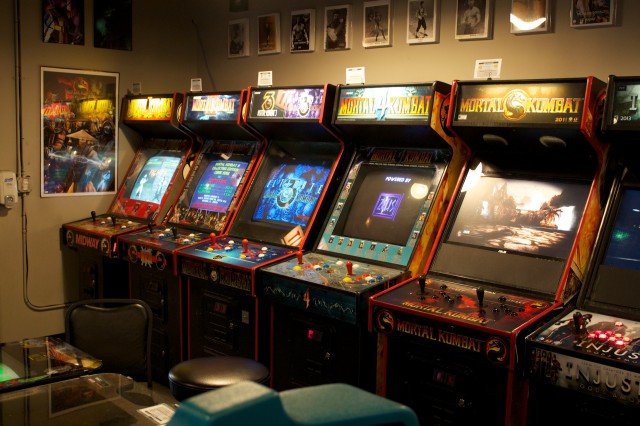
The games are loosely grouped by genre. There's a room full of fighting games, including more versions of Mortal Kombat than I knew existed. The back row of the arcade consists of shooting simulators, and one of the middle rows was apparently the early-'80s nostalgia section. It was there that I found the cabinets I spent much of high school pumping quarters and tokens into: Gorf, Ms. Pac-Man, Tempest, Donkey Kong, Missile Command, Bump and Jump, Frogger, Zaxxon… the list goes on. "People come through the door [and] you can tell it's their first time," Mack told me as I marveled at the selection. "It's an old friend you haven't seen for 20 years."
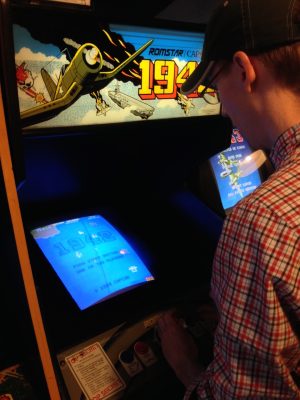
Nate and I spent some time getting reacquainted with some of our old friends. I quickly found that, while my Q-bert skills were rusty, I still remembered the patterns I had memorized for Donkey Kong and Ms. Pac-Man (although my reflexes weren't as quick as they were 30 years ago). An epic 1942 battle with Nate ended in victory for me.
I drifted from cabinet to cabinet, not having to worry about digging through my pockets for another quarter or visiting a change machine for more tokens. Not having to pay for each game had one unanticipated side-effect: walking away from a game in progress. My first shot at Donkey Kong Junior resulted in two deaths on the first screen, so I cut my losses and moved on to Defender sequel Stargate.
Most of the games were in excellent shape, but there were a couple in need of some TLC. Sometimes the joystick didn’t work all that well, a button needed to be mashed really hard, or a trackball wouldn’t spin very smoothly. And some of the games on the floor were powered down. Given the sheer abundance of old titles, the disappointment of finding a game in less-than-perfect working order was always tempered by the joy of spotting another long-lost friend.
This old cabinet
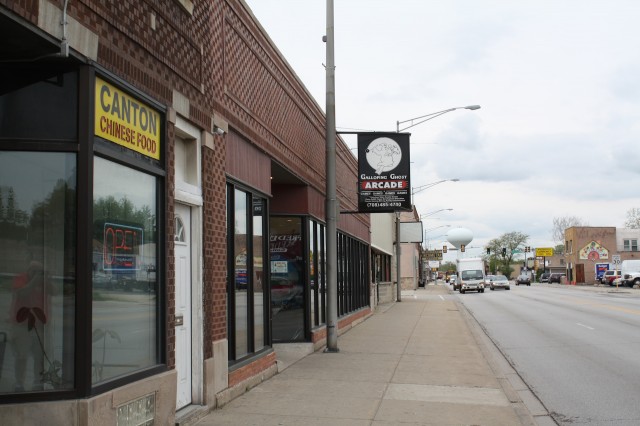
Getting the arcade open was a challenge on a couple of levels for Mack. First up was finding a location. "We went to other places and other towns," Mack explained. "They said 'you're going to have kids hanging out there.' And there were problems back in the '80s." It's also a big time commitment. Although he has a small handful of staff, he's there almost every day of the week.
Brookfield, where Galloping Ghost is located, has a limit of only six coin-operated machines per building. In winning approval for the arcade from the city, Mack stressed the educational aspect of Galloping Ghost. "We teach people how to wire their machines… If somebody brings something in, instead of us just fixing it for them, we show them and let them fix it." Those classes have paid off, not just for folks who have a cabinet or two in the basement, but for owners of other area arcades who have attended weekend repair clinics.
Toward the back of the arcade is a repair room littered with old boards and CRTs. What do you do when a CRT dies, I asked Mack. "There's a TV repair shop down the street we use," was the reply.
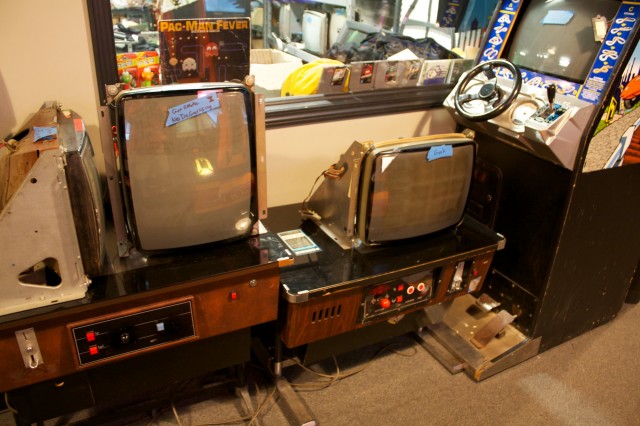
Cabinets can also be pilfered for parts. For instance, the monitor for Galaga 3 started its life inside a Ms. Pac-Man cabinet, judging by the burned-in image of the first-level maze. And sometimes getting games running can be a real pain—or really expensive. Take King of Fighters XIII: "when this came out, there was nobody in the US who had it," said Mack. "The board by itself is $8,000, so I spent the $8,000 to get it… imported it from Japan."
"About 14 months later, the home console [version] came out," he continued. "They added two new characters, so nobody wanted to play the arcade version anymore and we were left with an $8,000 door stop."
So he dropped a PlayStation 3 into the cabinet so gamers could have the most current experience. But gamers can be fickle. "It's not as popular in the competitive scene… I'm actually swapping it back to the original arcade hardware," Mack said. "It's nice to have more characters, but it's about being the true arcade experience." King of Fighters XIII was also one of the few machines in the arcade with an LCD instead of CRT.
Having spare parts and extra cabinets allows Galloping Ghost to give some games special treatment, as well. “[One version of] Mortal Kombat didn’t get an arcade release,” Mack said. “So we did a full custom cabinet and side art. We really made it look like an actual cabinet release [and] held tournaments on it.”
Developer NetherRealm heard about Galloping Ghost’s custom Mortal Kombat cabinet and commissioned Mack to build one for Injustice: Gods Among Us. “We made one for here and one for their office,” Mack said.
With all of the rare and obscure titles at Galloping Ghost, I wondered if there were games Mack wanted but couldn’t find. “It’s all out there,” he replied. “There’s always stuff I’m looking for, and sometimes I’ll come across it, but I don’t want to spend that much money.” His patience usually pays off, however: Nemesis took 14 months to track down and buy.
A new fighter
Galloping Ghost currently has two different locations in the same building: the arcade and Galloping Ghost Studio. In between is a catering business that Mack would love to take over so he could have the entire building to himself. To that end, he has—you guessed it—a Kickstarter campaign to raise money to buy out the caterer and expand into the space. Included in the expansion plan is a dedicated pinball room, gaming lounges for PC and console gaming, and even the “Ghost Luxury Hostel” for visiting gamers.
To reach the studio, we had to walk down Ogden Avenue to another entrance. As Mack fished the keys out of his pockets, I peered through the window at even more classic games, including Xevious, Scramble, and Crazy Climber. As we walked into the studio, the first thing I noticed was a massive cabinet for a game called Dark Presence. A closer look revealed that it was manufactured by Galloping Ghost Productions. That’s right—Mack is building his own fighting game.
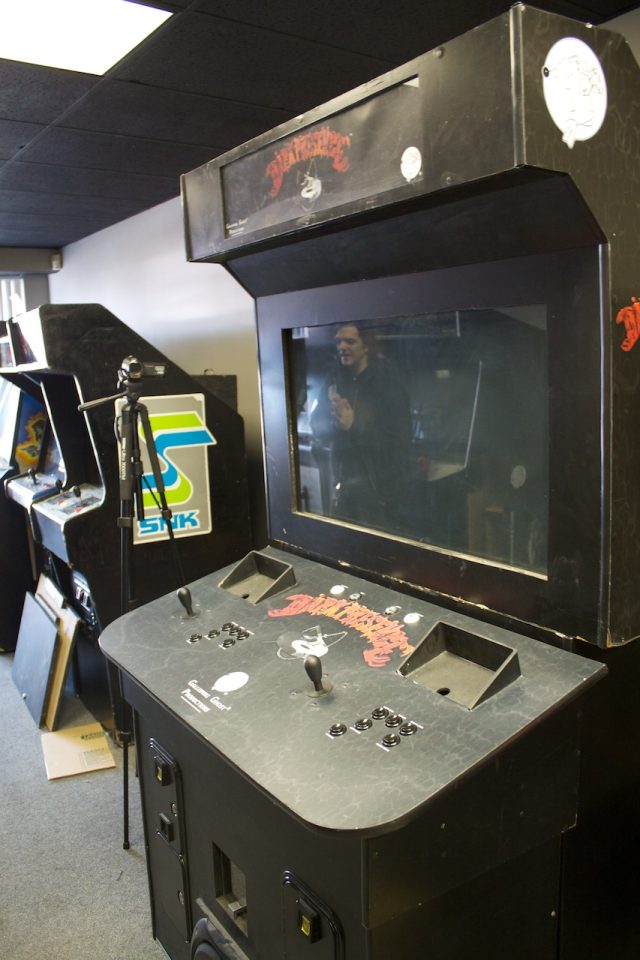
“We had originally approached the actors from Mortal Kombat to be in it,” Mack explained. “But it was way too much of a time commitment for them.” Having studied martial arts for 30 years, Mack did all the choreography for Dark Presence. “The actor had to do the moves, and that footage ended up being the sprites for the game. They all had to do it in costume.”
Almost all of the production is done in-house, including 3D rendering. “We’re trying to create a unique game,” Mac said. “We didn’t want to rip Mortal Kombat off. We didn’t want to rip Street Fighter off. It’s more based on real fighting than those other games.”
Mack walked us around the studio, including a back room with about a dozen pinball tables and a closet full of boards, carts, and CRTs. In another room, I spied Crazy Climber. Mack fired it up for me and patiently watched as I reacquainted myself with the game’s odd control mechanic well enough to make it to the third skyscraper.
Wandering the aisles of Galloping Ghost was fun. Hearing Berzerk say “stop the humanoid, stop the intruder” upon completing a level and having Gorf taunt me with “bite the dust, Space Colonel” 30-plus years after the last time I encountered one of those cabinets in an arcade almost made the trip worthwhile by itself. After four hours spent in the 1980s, I emerged blinking into the sunshine of 2014. Gaming has come a long way from the arcade’s heyday, with immersive stories and rich graphical experiences reaching heights undreamed of when I was a teenager in suburban Denver. But sometimes it’s good to revisit the past, when game mechanics were simpler and plots nearly nonexistent, if only to marvel at how far we’ve come.
-
The arcade's sign in Brookfield, Illinois. Nate Anderson -
Pixel art characters adorn the wall behind the front counter. Eric Bangeman -
A character from Rampage… made out of tiny plastic beads. Nate Anderson -
Galloping Ghost really has over 400 arcade games. Nate Anderson -
There was a Galaga 3? Nate Anderson -
Ars Managing Editor Eric Bangeman relives his misspent youth by playing Q*bert. Nate Anderson -
An old FBI warning about pirating video games. Nate Anderson -
Many of the controllers have been "well loved" over the last two decades. Nate Anderson -
Gotta love custom controllers, including my personal favorite, the handlebars from Paperboy. Nate Anderson -
An original SEGA label on the back of the Zaxxon cabinet. Nate Anderson -
Just about every controller is represented, from joysticks to exceptionally realistic guns. Nate Anderson -
The parts room. Nate Anderson -
Old CRTs are always in demand to fix ailing machines. Nate Anderson -
The arcade also has a number of sit-down games, including Sega Strike Fighter, but most are stand-up, old-school affairs. Nate Anderson -
A TV displays current high scores for hundreds of titles. Nate Anderson -
1942 and 1943 next to each other. Not pictured: me kicking Nate Anderson's @$$ in the former. Eric Bangeman -
Deputy Editor Nate Anderson playing 1942. Eric Bangeman -
Eric beats Nate in a friendly bout of 1942, setting the day's record. Nate Anderson -
Galloping Ghost specializes in obscure titles, including this Japanese import, Peaceful Death. Nate Anderson -
Doc Mack, the owner of Galloping Ghost, holds several world records, including this one in King of Fighters 1996. Nate Anderson -
Many of the old cabinets had terrific art on the sides. Nate Anderson -
The side cabinet art from Jail Break. Nate Anderson -
My personal favorite, the art from 1943. Nate Anderson -
Fans help keep the play floor from getting too sweaty—those CRTs weren't built to modern energy efficiency standards. Nate Anderson -
Another aisle of machines. Nate Anderson -
BurgerTime! If you want to play a classic game, it's probably here. Nate Anderson -
The back of a Ms. Pac-Man machine shows the scars of age. Nate Anderson -
The buttons have held up to plenty of presses. Nate Anderson -
Ah, the weapons van. Who hasn't wanted to summon one while driving down the highway? Nate Anderson -
The bench seat from Lucky & Wild. It appears someone got both lucky and wild in it. Nate Anderson -
To save space, Galloping Ghost will consolidate original ROM boards into a single cabinet. Here, my childhood fave Arkanoid gets merged with its sequel. Nate Anderson -
Still in pristine shape, this Rally-X tabletop unit is the only game in the arcade with a "smoke screen" button. Nate Anderson -
The Galloping Ghost model is simple: Pay $15, and play all you want. Nate Anderson -
Maintenance, a never-ending job. Nate Anderson -
Ah, the memories of NARC, a game in which you learn to stay away from drugs by wasting hobos and dealers in the bloodiest possible manner. Nate Anderson -
From the mind of Michael Jackson, game designer. Nate Anderson
It's Thanksgiving week in the US, and most of our staff is enjoying one last work-free afternoon where a trip to the movies or arcade is possible. As such, we're resurfacing this story of visiting the largest arcade in the US (you know, in case you need a small road trip this weekend). This story originally ran on May 17, 2014, and it appears unchanged below.“The largest video arcade in the USA,” boasted the website. “We’ve got to make it over there," I told Deputy Editor Nate Anderson over IM one morning. Galloping Ghost, an arcade located in the western suburbs of Chicago, was said to house well over 400 vintage games. The combination of proximity and the desire to while away an afternoon in a warm, nostalgic gaming haze eventually overpowered our excuses not to go, so we made the trip.
As someone who came of age in the 1980s, games such as Ms. Pac-Man, Donkey Kong, Defender, and Crazy Climber have a special place in my heart. Too many Saturdays, I would hop on my bike, ride to the Aurora Mall, and exchange my paper route earnings for tokens at the arcade there. I spent many an afternoon blasting aliens, gobbling glowing dots, leaping over barrels, and dodging bird poop and potted plants while climbing skyscrapers. As the console games of the time felt like graphically inferior knockoffs of my arcade favorites, my video-gaming attention was focused first and foremost on the arcades.
The mid- and late-'80s saw a decline in arcades, and despite some intermittent surges in popularity, they've never recaptured the glory years that I remember from high school. Gaming these days mostly happens on a console at home, on a smartphone or tablet, or at food-and-gaming behemoths like Dave & Busters. Though shrunken in numbers, arcades like those of my youth still live on in scattered locations.
Galloping Ghost, located in Brookfield, Illinois, about a 25-minute (best case) drive from downtown Chicago, is one such place. $15 gets you all of the gaming you can stand until closing time at 2am—no quarters needed. And hold onto your receipt, as it will get you back in should you choose to head across the street to Tony's Breakfast Cafe (now open 24 hours) for some nourishment.
Galloping Ghost resides in an unassuming brick building on a commercial section of busy Ogden Avenue not far from the Brookfield Zoo. Upon entering, my senses were assaulted by the beeping and blooping of hundreds of cabinets. I noticed the large fans circulating air heated by a couple hundred vintage consoles. "What's the heating bill like in the winter?" I later asked owner “Doc” Mack. "Cheap," he replied.
The wall behind the front counter is populated by pixel-art characters from popular video games. A small fridge offers up carbonated beverages and sports drinks. Under the counter are candy bars. And as I scanned the dimly lit interior, I saw little more than wall-to-wall consoles resting on well-worn gray carpeting. Stools and chairs are scattered around the aisles in case you want to take a load off while getting your game on. Many of the consoles have placards perched on top with record high scores, both worldwide and for Galloping Ghost.
Walking up and down the aisles, I examined the consoles. Some of them looked the worse for wear, with chipping or fading paint and burned-in monitors. Others resided in generic-looking cabinets, or their appearance didn’t square with my memory of how the consoles looked; Mack later explained that they often cannibalized parts and cabinets to keep the games alive. Some cabinets housed two titles, like Pac-Man Jr. and Super Pac-Man. And alongside smash-hits like Galaga were less-popular sequels like Galaga 88 and Galaga 3; for every Centipede, there was a Millipede. It was beautiful.
-
A row of shooters along the back wall of Galloping Ghost. Eric Bangeman -
"Intruder alert! Intruder alert!" Eric Bangeman -
This cabinet housed both Dragonball Z and Mega Man: The Power Battle. Eric Bangeman -
Laserdisc gimmickry made Dragon's Lair one of the worst games of all time. Eric Bangeman -
Galloping Ghost has a vast array of video games. Eric Bangeman -
One of the many high score placards at Galloping Ghost. My personal best on Galaga has two fewer digits. Eric Bangeman -
Nate and Lee could only dream of making it to Space Colonel on Gorf. Eric Bangeman -
All the Pac-Man you could ever want. Sequels Super Pac-Man and Pac-Man Jr. weren't good enough to get their own cabinets. Eric Bangeman -
Yes, they have Battletoads—specifically, the EA-produced side-scrolling beat-'em-up from 1994. Eric Bangeman -
Before being dropped into a Galaga 88 cabinet, this CRT spent most of its life with Ms. Pac-Man. Eric Bangeman -
H.R. Giger's influence extended into video games after a fashion. Eric Bangeman -
A boxing game with unique controls. Eric Bangeman -
One of the many, many fighters at Galloping Ghost. Eric Bangeman -
You can't install the Crimea expansion pack on this original arcade version of Tetris. Eric Bangeman -
Super Mario Bros. in a repurposed cabinet. Eric Bangeman -
Galloping Ghost is eerily quiet before the consoles are turned on. Eric Bangeman -
"The more you know…" Eric Bangeman -
A bunch of boards on the floor in Galloping Ghost Studios. Eric Bangeman -
The closets are packed with spare parts, as well. Eric Bangeman -
I'd never run across Thunder Blade before. Eric Bangeman -
Sea Devil is an old-school sub-hunting game. Eric Bangeman -
Owner Doc Mack holds up the enormous board from Capcom's Mars Matrix… Eric Bangeman -
…which shares a single cabinet with Gigawing. Eric Bangeman -
Eric Bangeman -
Six versions of Neo Geo in a single cabinet. Eric Bangeman -
And you can see the decades of dust inside this cabinet. Each cartridge at the back contains a different game. Eric Bangeman -
"He's hooked/he's hooked/his brain is cooked." Eric Bangeman -
Doc Mack's custom Mortal Kombat controller, complete with metal studs and two small knives that can be pulled from the side. -
A Mortal Kombat controller signed by many of the game's character models. -
The interior of the custom Mortal Kombat controller. -
Galloping Ghost is building its own arcade game called Dark Presence. Here, a prototype of the controls. -
Doc Mack shows off a rendered scene from his original game Dark Presence. -
The music for Dark Presence is all recorded in the building next to the arcade. -
A to-do list for Dark Presence probably looks a lot like your own to-do list… though with more "blood"-related entries. -
Several fighters who will appear in Dark Presence.
Arcades and barcades
Independent, rather than franchised, arcades have had a bit of a resurgence in recent years, driven by the realization that "beer + videogames + nostalgia" can be a winning combination. "Barcades," as they are called, have sprung up all over the country. One barcade, the Emporium, played host to the Ars crew last fall. Its excellent beer list and solid game collection made it a great place to unwind after two days of meetings.
But you won't find beer at Galloping Ghost. "There's too little focus on the arcade" at barcades, Mack told Deputy Editor Nate Anderson and me during a recent visit. "When you inject alcohol into it, it muddies it up a little bit." That's why you can't buy anything stronger than a Mountain Dew there. But as I looked over row upon row of cabinets, I knew I wouldn't mind.

The games are loosely grouped by genre. There's a room full of fighting games, including more versions of Mortal Kombat than I knew existed. The back row of the arcade consists of shooting simulators, and one of the middle rows was apparently the early-'80s nostalgia section. It was there that I found the cabinets I spent much of high school pumping quarters and tokens into: Gorf, Ms. Pac-Man, Tempest, Donkey Kong, Missile Command, Bump and Jump, Frogger, Zaxxon… the list goes on. "People come through the door [and] you can tell it's their first time," Mack told me as I marveled at the selection. "It's an old friend you haven't seen for 20 years."

Nate and I spent some time getting reacquainted with some of our old friends. I quickly found that, while my Q-bert skills were rusty, I still remembered the patterns I had memorized for Donkey Kong and Ms. Pac-Man (although my reflexes weren't as quick as they were 30 years ago). An epic 1942 battle with Nate ended in victory for me.
I drifted from cabinet to cabinet, not having to worry about digging through my pockets for another quarter or visiting a change machine for more tokens. Not having to pay for each game had one unanticipated side-effect: walking away from a game in progress. My first shot at Donkey Kong Junior resulted in two deaths on the first screen, so I cut my losses and moved on to Defender sequel Stargate.
Most of the games were in excellent shape, but there were a couple in need of some TLC. Sometimes the joystick didn’t work all that well, a button needed to be mashed really hard, or a trackball wouldn’t spin very smoothly. And some of the games on the floor were powered down. Given the sheer abundance of old titles, the disappointment of finding a game in less-than-perfect working order was always tempered by the joy of spotting another long-lost friend.
This old cabinet

Getting the arcade open was a challenge on a couple of levels for Mack. First up was finding a location. "We went to other places and other towns," Mack explained. "They said 'you're going to have kids hanging out there.' And there were problems back in the '80s." It's also a big time commitment. Although he has a small handful of staff, he's there almost every day of the week.
Brookfield, where Galloping Ghost is located, has a limit of only six coin-operated machines per building. In winning approval for the arcade from the city, Mack stressed the educational aspect of Galloping Ghost. "We teach people how to wire their machines… If somebody brings something in, instead of us just fixing it for them, we show them and let them fix it." Those classes have paid off, not just for folks who have a cabinet or two in the basement, but for owners of other area arcades who have attended weekend repair clinics.
Toward the back of the arcade is a repair room littered with old boards and CRTs. What do you do when a CRT dies, I asked Mack. "There's a TV repair shop down the street we use," was the reply.

Cabinets can also be pilfered for parts. For instance, the monitor for Galaga 3 started its life inside a Ms. Pac-Man cabinet, judging by the burned-in image of the first-level maze. And sometimes getting games running can be a real pain—or really expensive. Take King of Fighters XIII: "when this came out, there was nobody in the US who had it," said Mack. "The board by itself is $8,000, so I spent the $8,000 to get it… imported it from Japan."
"About 14 months later, the home console [version] came out," he continued. "They added two new characters, so nobody wanted to play the arcade version anymore and we were left with an $8,000 door stop."
So he dropped a PlayStation 3 into the cabinet so gamers could have the most current experience. But gamers can be fickle. "It's not as popular in the competitive scene… I'm actually swapping it back to the original arcade hardware," Mack said. "It's nice to have more characters, but it's about being the true arcade experience." King of Fighters XIII was also one of the few machines in the arcade with an LCD instead of CRT.
Having spare parts and extra cabinets allows Galloping Ghost to give some games special treatment, as well. “[One version of] Mortal Kombat didn’t get an arcade release,” Mack said. “So we did a full custom cabinet and side art. We really made it look like an actual cabinet release [and] held tournaments on it.”
Developer NetherRealm heard about Galloping Ghost’s custom Mortal Kombat cabinet and commissioned Mack to build one for Injustice: Gods Among Us. “We made one for here and one for their office,” Mack said.
With all of the rare and obscure titles at Galloping Ghost, I wondered if there were games Mack wanted but couldn’t find. “It’s all out there,” he replied. “There’s always stuff I’m looking for, and sometimes I’ll come across it, but I don’t want to spend that much money.” His patience usually pays off, however: Nemesis took 14 months to track down and buy.
A new fighter
Galloping Ghost currently has two different locations in the same building: the arcade and Galloping Ghost Studio. In between is a catering business that Mack would love to take over so he could have the entire building to himself. To that end, he has—you guessed it—a Kickstarter campaign to raise money to buy out the caterer and expand into the space. Included in the expansion plan is a dedicated pinball room, gaming lounges for PC and console gaming, and even the “Ghost Luxury Hostel” for visiting gamers.
To reach the studio, we had to walk down Ogden Avenue to another entrance. As Mack fished the keys out of his pockets, I peered through the window at even more classic games, including Xevious, Scramble, and Crazy Climber. As we walked into the studio, the first thing I noticed was a massive cabinet for a game called Dark Presence. A closer look revealed that it was manufactured by Galloping Ghost Productions. That’s right—Mack is building his own fighting game.

“We had originally approached the actors from Mortal Kombat to be in it,” Mack explained. “But it was way too much of a time commitment for them.” Having studied martial arts for 30 years, Mack did all the choreography for Dark Presence. “The actor had to do the moves, and that footage ended up being the sprites for the game. They all had to do it in costume.”
Almost all of the production is done in-house, including 3D rendering. “We’re trying to create a unique game,” Mac said. “We didn’t want to rip Mortal Kombat off. We didn’t want to rip Street Fighter off. It’s more based on real fighting than those other games.”
Mack walked us around the studio, including a back room with about a dozen pinball tables and a closet full of boards, carts, and CRTs. In another room, I spied Crazy Climber. Mack fired it up for me and patiently watched as I reacquainted myself with the game’s odd control mechanic well enough to make it to the third skyscraper.
Wandering the aisles of Galloping Ghost was fun. Hearing Berzerk say “stop the humanoid, stop the intruder” upon completing a level and having Gorf taunt me with “bite the dust, Space Colonel” 30-plus years after the last time I encountered one of those cabinets in an arcade almost made the trip worthwhile by itself. After four hours spent in the 1980s, I emerged blinking into the sunshine of 2014. Gaming has come a long way from the arcade’s heyday, with immersive stories and rich graphical experiences reaching heights undreamed of when I was a teenager in suburban Denver. But sometimes it’s good to revisit the past, when game mechanics were simpler and plots nearly nonexistent, if only to marvel at how far we’ve come.
-
The arcade's sign in Brookfield, Illinois. Nate Anderson -
Pixel art characters adorn the wall behind the front counter. Eric Bangeman -
A character from Rampage… made out of tiny plastic beads. Nate Anderson -
Galloping Ghost really has over 400 arcade games. Nate Anderson -
There was a Galaga 3? Nate Anderson -
Ars Managing Editor Eric Bangeman relives his misspent youth by playing Q*bert. Nate Anderson -
An old FBI warning about pirating video games. Nate Anderson -
Many of the controllers have been "well loved" over the last two decades. Nate Anderson -
Gotta love custom controllers, including my personal favorite, the handlebars from Paperboy. Nate Anderson -
An original SEGA label on the back of the Zaxxon cabinet. Nate Anderson -
Just about every controller is represented, from joysticks to exceptionally realistic guns. Nate Anderson -
The parts room. Nate Anderson -
Old CRTs are always in demand to fix ailing machines. Nate Anderson -
The arcade also has a number of sit-down games, including Sega Strike Fighter, but most are stand-up, old-school affairs. Nate Anderson -
A TV displays current high scores for hundreds of titles. Nate Anderson -
1942 and 1943 next to each other. Not pictured: me kicking Nate Anderson's @$$ in the former. Eric Bangeman -
Deputy Editor Nate Anderson playing 1942. Eric Bangeman -
Eric beats Nate in a friendly bout of 1942, setting the day's record. Nate Anderson -
Galloping Ghost specializes in obscure titles, including this Japanese import, Peaceful Death. Nate Anderson -
Doc Mack, the owner of Galloping Ghost, holds several world records, including this one in King of Fighters 1996. Nate Anderson -
Many of the old cabinets had terrific art on the sides. Nate Anderson -
The side cabinet art from Jail Break. Nate Anderson -
My personal favorite, the art from 1943. Nate Anderson -
Fans help keep the play floor from getting too sweaty—those CRTs weren't built to modern energy efficiency standards. Nate Anderson -
Another aisle of machines. Nate Anderson -
BurgerTime! If you want to play a classic game, it's probably here. Nate Anderson -
The back of a Ms. Pac-Man machine shows the scars of age. Nate Anderson -
The buttons have held up to plenty of presses. Nate Anderson -
Ah, the weapons van. Who hasn't wanted to summon one while driving down the highway? Nate Anderson -
The bench seat from Lucky & Wild. It appears someone got both lucky and wild in it. Nate Anderson -
To save space, Galloping Ghost will consolidate original ROM boards into a single cabinet. Here, my childhood fave Arkanoid gets merged with its sequel. Nate Anderson -
Still in pristine shape, this Rally-X tabletop unit is the only game in the arcade with a "smoke screen" button. Nate Anderson -
The Galloping Ghost model is simple: Pay $15, and play all you want. Nate Anderson -
Maintenance, a never-ending job. Nate Anderson -
Ah, the memories of NARC, a game in which you learn to stay away from drugs by wasting hobos and dealers in the bloodiest possible manner. Nate Anderson -
From the mind of Michael Jackson, game designer. Nate Anderson









